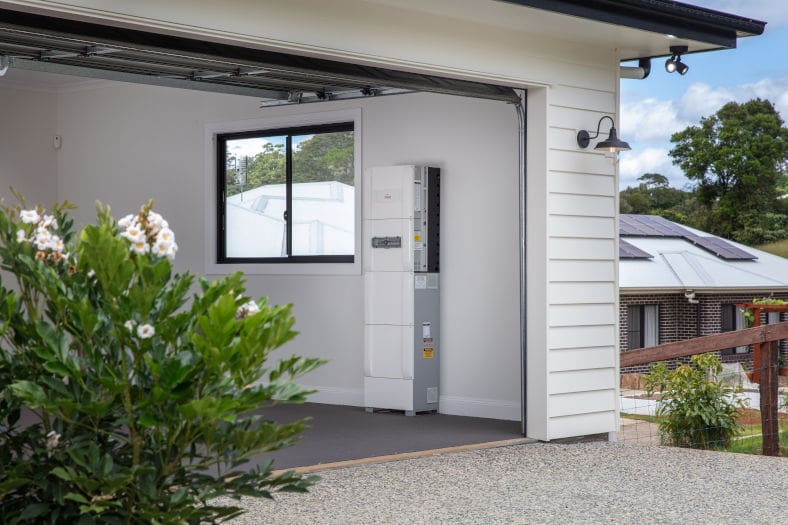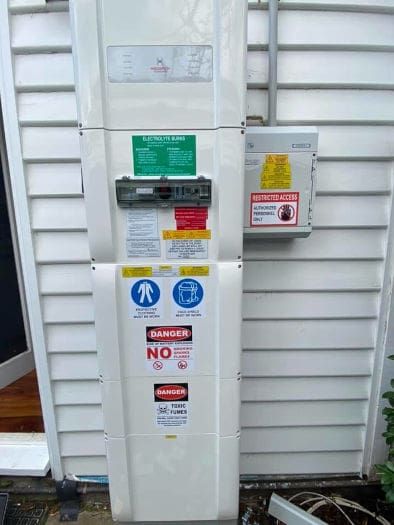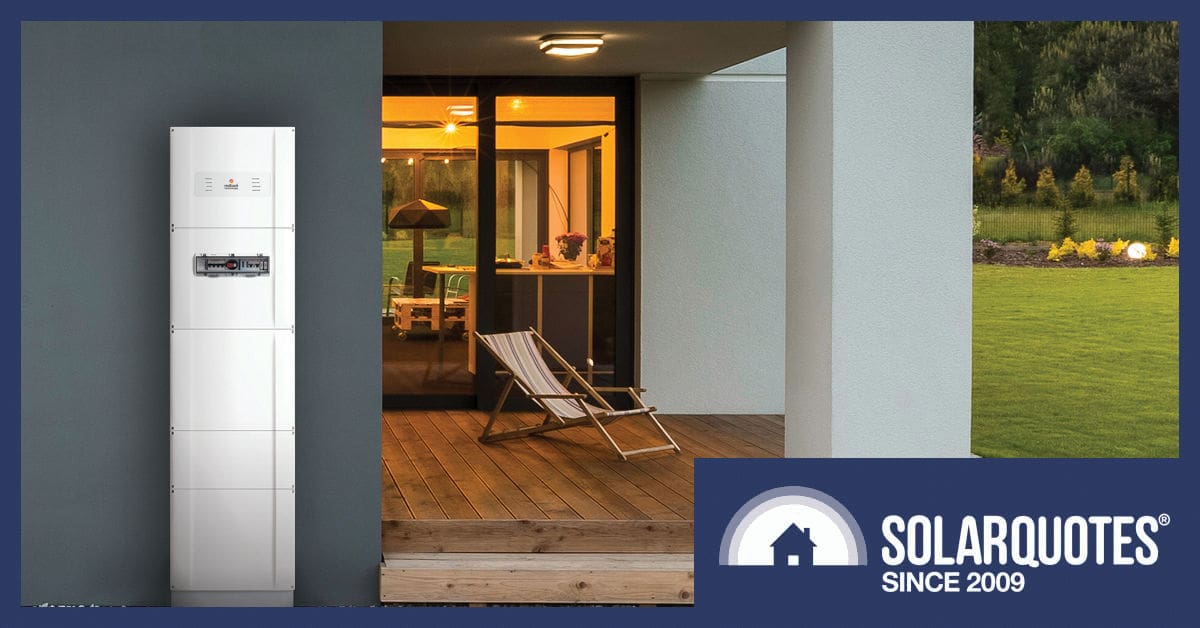The Sunshine State puzzles me sometimes.
Despite producing amazing things like Bluey and the Go Betweens, I think sometimes they’ve just had too much sun. We recently detailed QLD’s poorly executed remote solar shutdown plans and since then I’ve noted that inverter makers have specifically rated machines for 9999w to skirt the rules, while installers may have ‘accidentally’ forgotten to properly commission the much despised GSD (Generation Shutdown Device) units.
Dynamic Connections: The Smart Way To Control Solar
Happily there is now an alternative to GSD when it comes to throttling solar panels in QLD. South Australia’s development of Flexible Exports has been picked up by Energy Queensland, renamed Dynamic Connections and deployed to help control variable renewable resources.
This is a much nicer solution. GSD kills the power to your solar inverter and your house is immediately reliant on the grid while GSD is active. But Dynamic Connections allow your inverter to carry on powering your home – it simply reduces how much power is exported.
Redback Are Leading the Charge
Brisbane-based Redback Technologies has achieved a first, becoming the inaugural inverter manufacturer to receive native certification for compliance with Queensland’s Dynamic Connections for energy exports. This milestone is not just a feather in the cap for Redback Technologies; it represents a significant shift in how solar energy is managed at the domestic level.
Understanding Dynamic Connections
Dynamic Connections, offered in Queensland by Energex and Ergon Energy, represent a smarter, more flexible option for solar systems with compliant inverters. They adjust the export limits based on network demand, allowing homeowners to export more excess energy compared to traditional fixed export connections. This innovation is integral to accommodating the high density of solar energy systems in Queensland and preventing network saturation during peak times.
Redback Aren’t The Only Players
Catch Power have enabled Dynamic Connections with lots of inverter makers, in many cases being the only way to be a part of the new scheme. But it means adding their $447 Catch Solar Relay to your switchboard.1
However choosing a Redback Smart Inverter, Smart Hybrid System, or Smart 3-Phase Hybrid System means customers in Queensland can now opt for a Dynamic Connection instead of a fixed one, and have a single point of technical and warranty support.
Choosing a dynamic connection means you can export up to 10kW per phase, doubling the standard 5kW export limit. This enhancement is not just about maximising the return on solar investments, better still in means displacing fossil fuel in a state where coal is still a huge part of the generation profile.

Technically that probably wants a mechanical barrier to stop your car hitting it.
Benefits Galore
Dynamic Connections open up numerous advantages for QLD homeowners:
- Increased Export Limits: Homeowners can potentially double the amount of solar energy exported, significantly reducing power bills through enhanced feed-in tariffs.
- Flexibility for Home Systems: Even single-phase homes can connect up to 10kW of solar and battery energy storage without upgrading to a three-phase connection.
- Expanded Capacity for Existing Systems: Those with large solar installations can now consider adding a battery system, overcoming previous limitations imposed by fixed connections.
- Cost-Effective and Simplified Installation: Redback’s systems are equipped for Dynamic Connections without needing additional third-party hardware.

All of those stickers in the warning label kit don’t actually apply to this BESS… but they’ve been applied here.
Making the Switch
If you’re a Queensland resident with an existing solar system, transitioning to a Dynamic Connection is worth exploring.
To explore the feasibility of switching to a Dynamic Connection, reaching out to a solar installer or directly to Redback Technologies is an excellent first step.
Footnotes
- Adding a universal catch relay means you can save money on buying a branded consumption meter ↩


 RSS - Posts
RSS - Posts



Thanks for another great post- whether it affects me or not, it’s always great to catch up with the facts from this site.
I’m thankful to be on the old legacy Qld premium tariff, with a very tired 14 year old system, but will be very interested to look at this sort of thing when it comes to upgrading.
I’d LOVE to upgrade my system right now, but a friend did just that, was very careful but they still removed his premium tariff on what I’d call just a technicality.
Once they take it, it’s VERY hard to get it back. It’s very much a case of “guilty” with virtually no appeal process.
Energex makes lots of dumb decisions, including their dumb approach on completely throwing the switch on inverters when the grid is in oversupply.
Technically according to legislation it’s “possible” to connect a battery on the legacy FIT as long as you don’t draw from it when exporting, yet I’ve never heard of anyone successfully doing this.
I checked this out and I found that if on the old Qld solar bonus scheme a battery anywhere on the solar inverter/ house side of grid make the system void and scheme is cancelled out for you. Yes you can have a energy generator system such as a backup generator , wind turbine etc but only can run when system is not being powered by solar.
A battery, even if setup not to feed into grid, is not allowed.
Was your friends tarrif ended due to a battery added?
You’ll lose your 44c/kWh FiT in another 4.5 years so even if the maths doesn’t work at present, it will look very different when you drop to 5c/kWh, or less.
Behind not behind.
Queensland’s electricity network may seem prehistoric to many but a few things in article need to be addressed.
Firstly Queensland is a huge state but has large regional and rural populations. ( unlike WA where 99% of state is basically empty. ). Hence providing electricity services is very hard compared to a compact state like Victoria.
Notwithstanding this Queensland does a good job at it considering resources are spread thin. To make this work there are some unusual solutions. Take controlled load for example. This 1950’s technology has given Queensland grid controllers great tools in the highly variable supply that renewables give. The ability to load shed non essential loads such as water heaters, pool pumps , under floor heating and now compliant aircon allows good control of available energy. But controled load also allows grid operators to add loads too so grid operators have switching on ‘off peak’ controlled loads ( above) to soak up excess solar production in early afternoon lately to flatten the duck curve. These are valuable tools that southern power authorities have given away.
Queensland has a bunch of HELE coal plants that are not only more efficient than power plants in other states but are more responsive.
Lastly re EV power connection Qld has revised it rules and now permits fixed 32 amp connection to non controlled load 1 phase circuit for EV’s . Not that it ever really didn’t have as sparkies in Qld have long ago worked out that they could legally connect a 32 amp ( 7kw) EV charger to non controlled load dedicated circuit via a 32 amp socket and plug.
I have been wanting to replace /add to my existing system (1KW) for some time but I have been waiting for some common sense applications to come online.
Firstly being in an are prone to long blackouts I want my solar to keep powering my house and the rest to charge a battery not to simply shut down. I note that hybrid systems or inverters will now do just that but I will still wait until it is more of an industry standard with inverters rather than an oddity.
At some point I am also going to have a workshop put up and am considering retrofitting 3 phase power. That will depend on costs and inverters.
Hi Anthony, great article.
Is there any data available on the history of dynamic connection control to date in SE Queensland (Energex)? eg, curtailment periods less than 10kw or in particular less than 5kw for single phase premises?
Sorry Greg I don’t have any to hand.
SAPN says 2% but if you find anything let us know please
This Qlder says thanks for this excellent article.
Some questions please:
– Can you oversize a 10 kW inverter with 13.3 kW of panels, or are you limited to only 10 kW of panels/phase? – Energex website says “10kVA of solar PV …”
– Is the battery size limited to 10 kW, or can you go larger?
– Must the battery be AC-coupled, or can it also be DC-coupled with a dynamic connection?
Hi Phil,
Approvals are based on inverter size.
You can have 10kVa of inverter but the solar is dictated by the manufacturer spec
https://www.solarquotes.com.au/blog/beat-solar-oversize-rule/
Some connection approvals allow 10kW for a solar inverter + 10kW for a battery inverter. Some are just 10 flat.
Battery can be any size but 10kWh is common. Some are AC coupled which are great for retrofit. I prefer DC coupled.
https://www.solarquotes.com.au/blog/three-key-concepts-2024/
Thanks for this Anthony. I installed 6.6 kW panels, 5 kW inverter and 4.8 kWh DC battery on my previous home. It was great, but a bit more solar would have been welcome once the EV arrived.
I’m unable to put solar on the roof of my current apartment, but in time I will move to a house and will want as much solar as possible on the roof, with a larger DC battery. It’s great that dynamic connections are now allowed in Qld. With overcast days and an EV, a larger solar system would be very welcome now. Thanks again for the info.
Be aware that some electricity retailers specify 10 kW max for PV not just inverters. AGL does this, as does Momentum Energy, and Sumo by the look of it. See: https://wattever.com.au/retailer-solar-feed-in-tariffs-by-state-and-territory/
Sungrow assures me that their SH10RS inverter will support native flexible exports with Ergon “early this year”, whatever that means haha
Thanks George. My interpretation of what Ebergex says on their website is also that no more than 10 kW of panels are allowed.
In my experience DNSP approvals are alwsys based on kVa ratings of inverter. (unless they’re trying to exclude you from an old feed in tariff)
Thanks Anthony – so does this mean that the 133% oversize rule likely still applies for panels? It would be great to be allowed a 10 kW inverter and 13.33 kW of panels on single phase supply. With load shifting and charging an EV in the middle of the day, this would help to use up some of the otherwise wasted additional renewable energy above the 5kW export limit.
This article was very helpful for me as a Qlder who intends to install solar again on a future home.
yes Phil,
133% for solar or depending on inverter, 150 to 200% (or even more?) when you have a battery onsite.
https://www.solarquotes.com.au/blog/beat-solar-oversize-rule/
A suggestion please Anthony. It would be great to have an article explaining the difference between kVa and kW and the implications of this. I don’t understand this currently as I’ve always spoken in kW. Thanks.
Also, I forgot to say that by adding a 10 kWh battery a single phase home could install up to 20 kW of panels. This is very impressive!
It’s a great time to be installing solar in Qld, especially with the Qld govt battery rebate soon to begin.
Standby Phil,
We’re getting to this very soon.
Thanks
Once again Enphase are slow off the mark. Enphase are not yet listed for Queensland Dynamic Connections even though they submitted a paper to the government on seeking such a solution for export limiting some years ago.
When are Enphase actions going to match their positioning? Come on Enphase Australia, what are you doing about getting IQ Gateway onto the dynamic connections list?